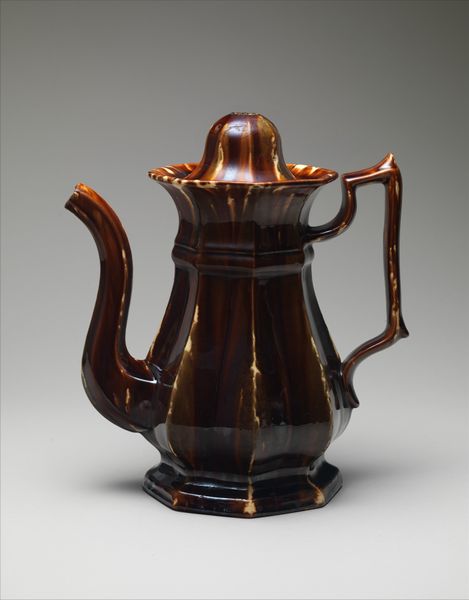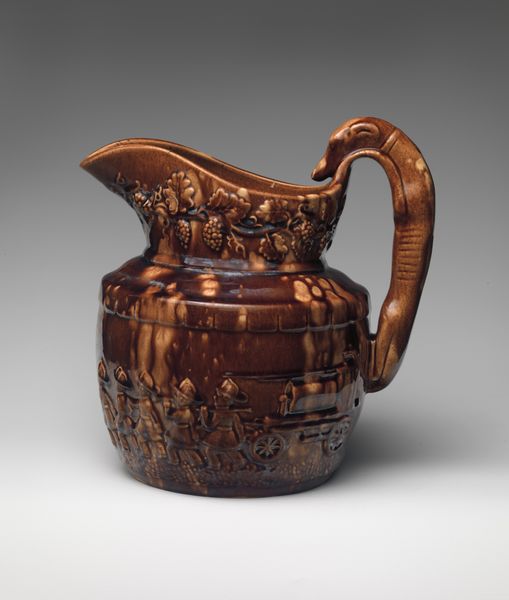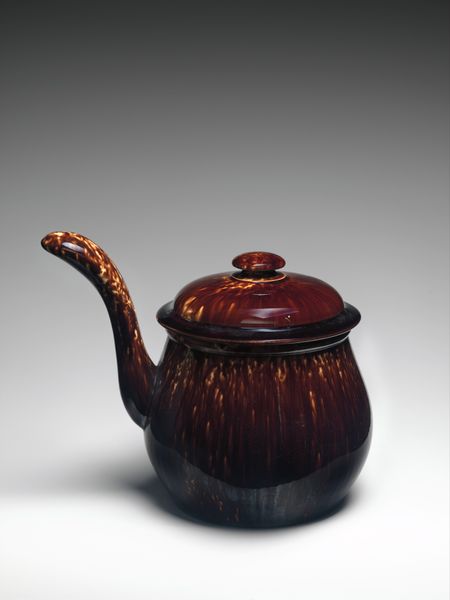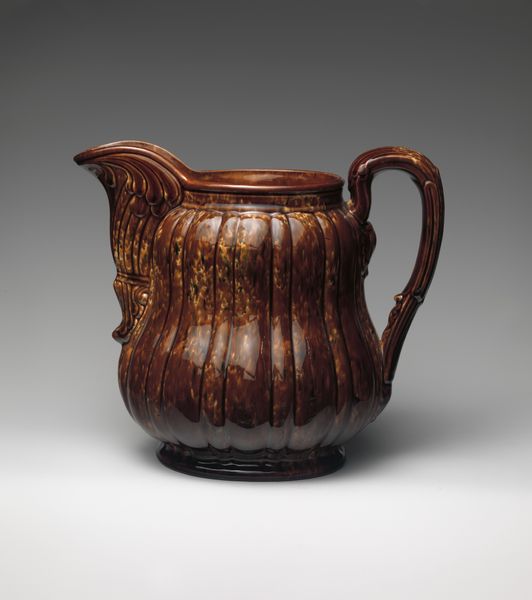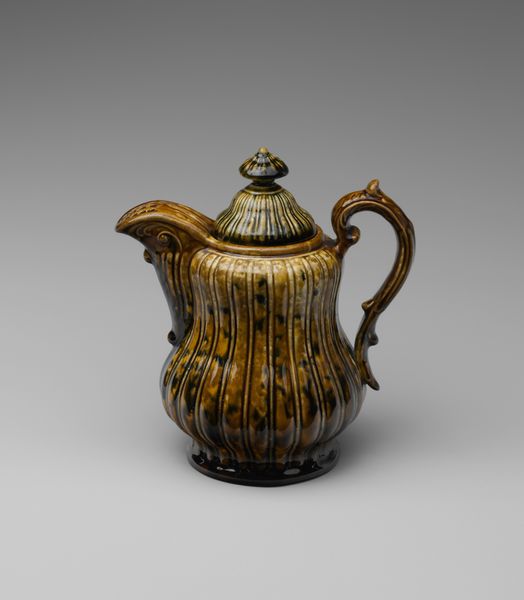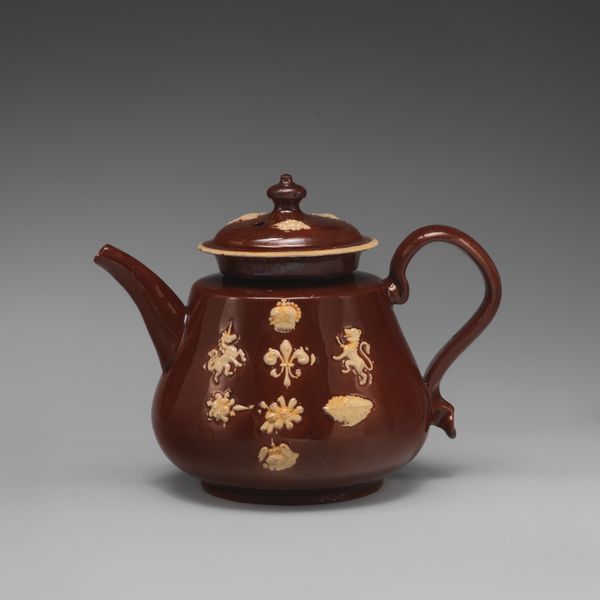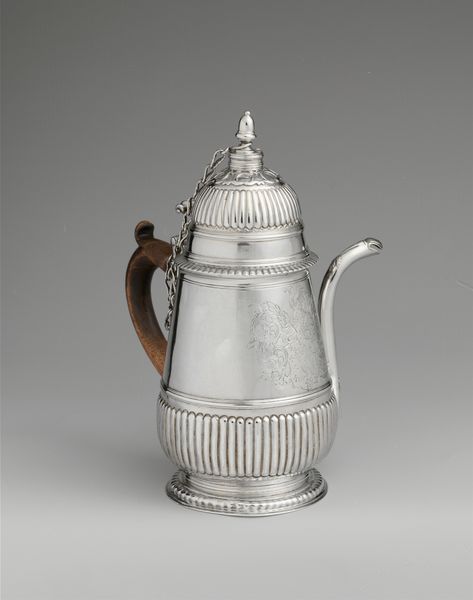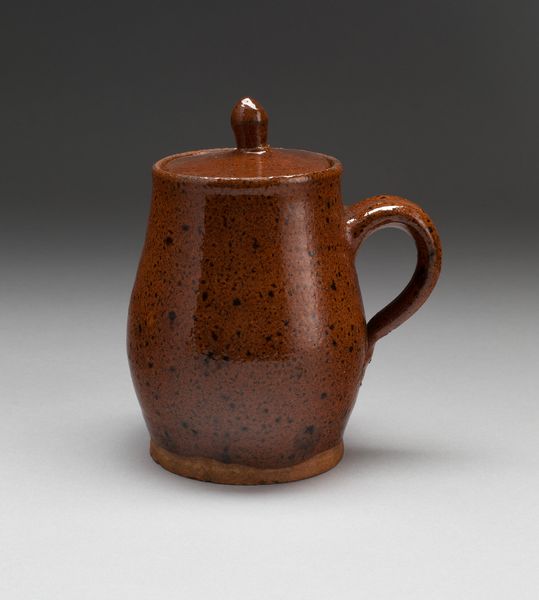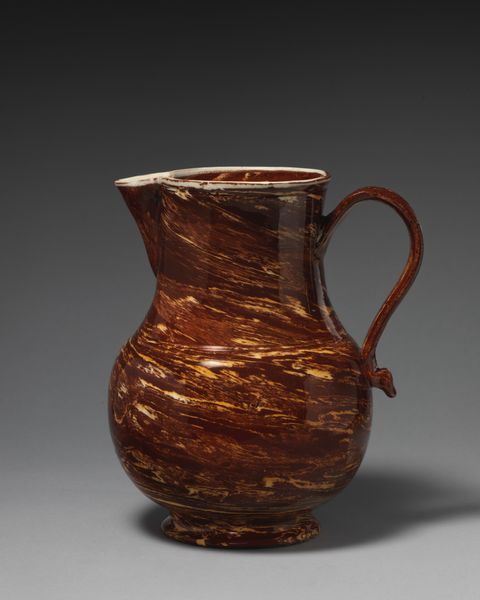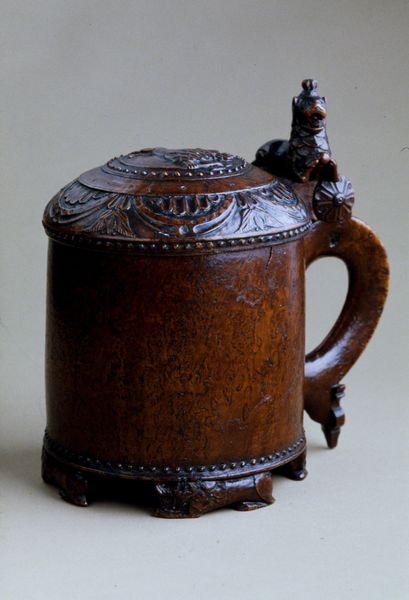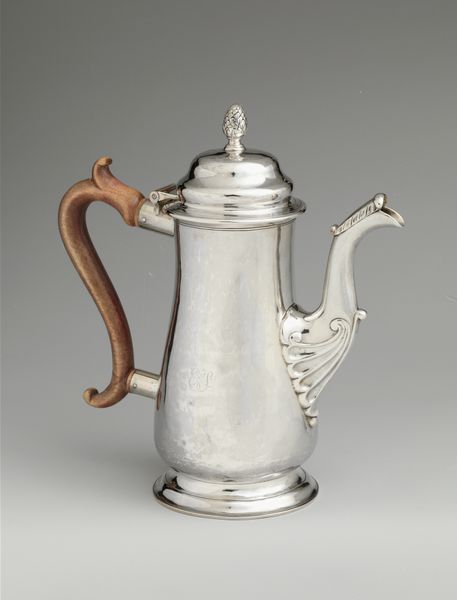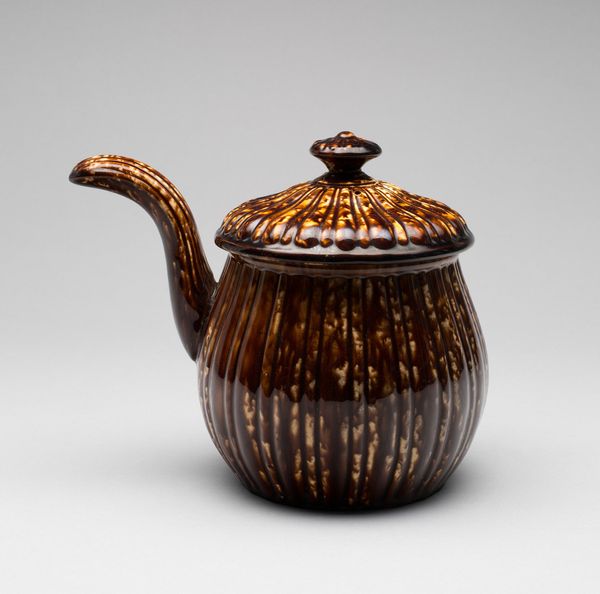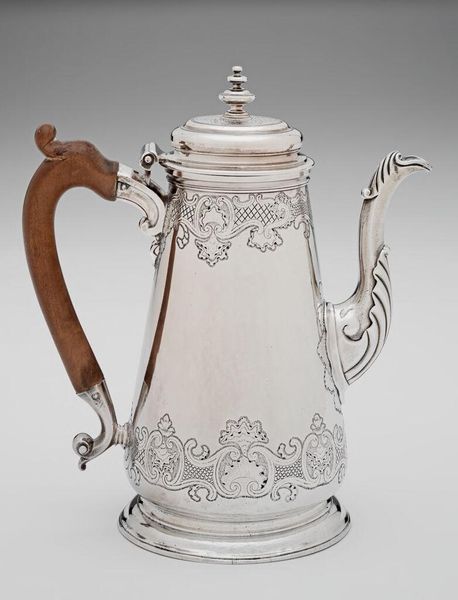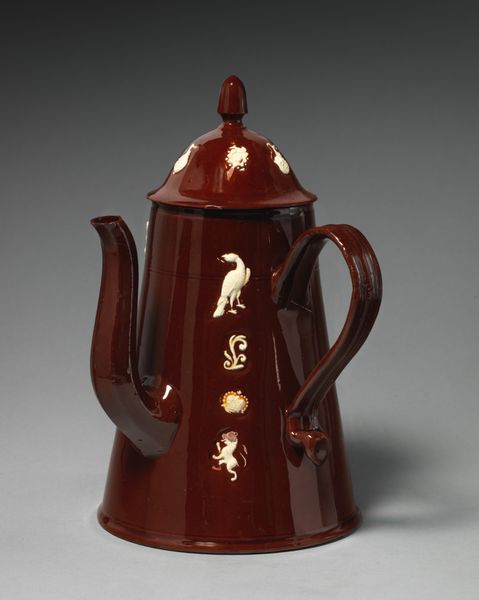
ceramic, sculpture
#
ceramic
#
sculpture
#
decorative-art
Dimensions: Height: 7 3/4 in. (19.7 cm)
Copyright: Public Domain
This intriguing coffeepot was made by John Astbury in the early 18th century using earthenware clay. It imitates the look of more precious materials, like marble, through a process called slip-casting. Colored liquid clay, or slip, was poured into a mold to create this red-brown swirling effect. The handle and spout were likely formed separately and then attached. You can see the marks of the maker’s hand, which softens the regularity of the form. The coffeepot gives us insight into the burgeoning culture of coffee consumption at the time. The look of luxury, achieved through relatively inexpensive means, made fashionable goods available to a wider market. This speaks volumes about the social aspirations of the rising middle class in the 1700s. Considering the material, making, and the social context around this object, we can appreciate the full meaning of this coffeepot, challenging the traditional divide between fine art and craft.
Comments
No comments
Be the first to comment and join the conversation on the ultimate creative platform.
